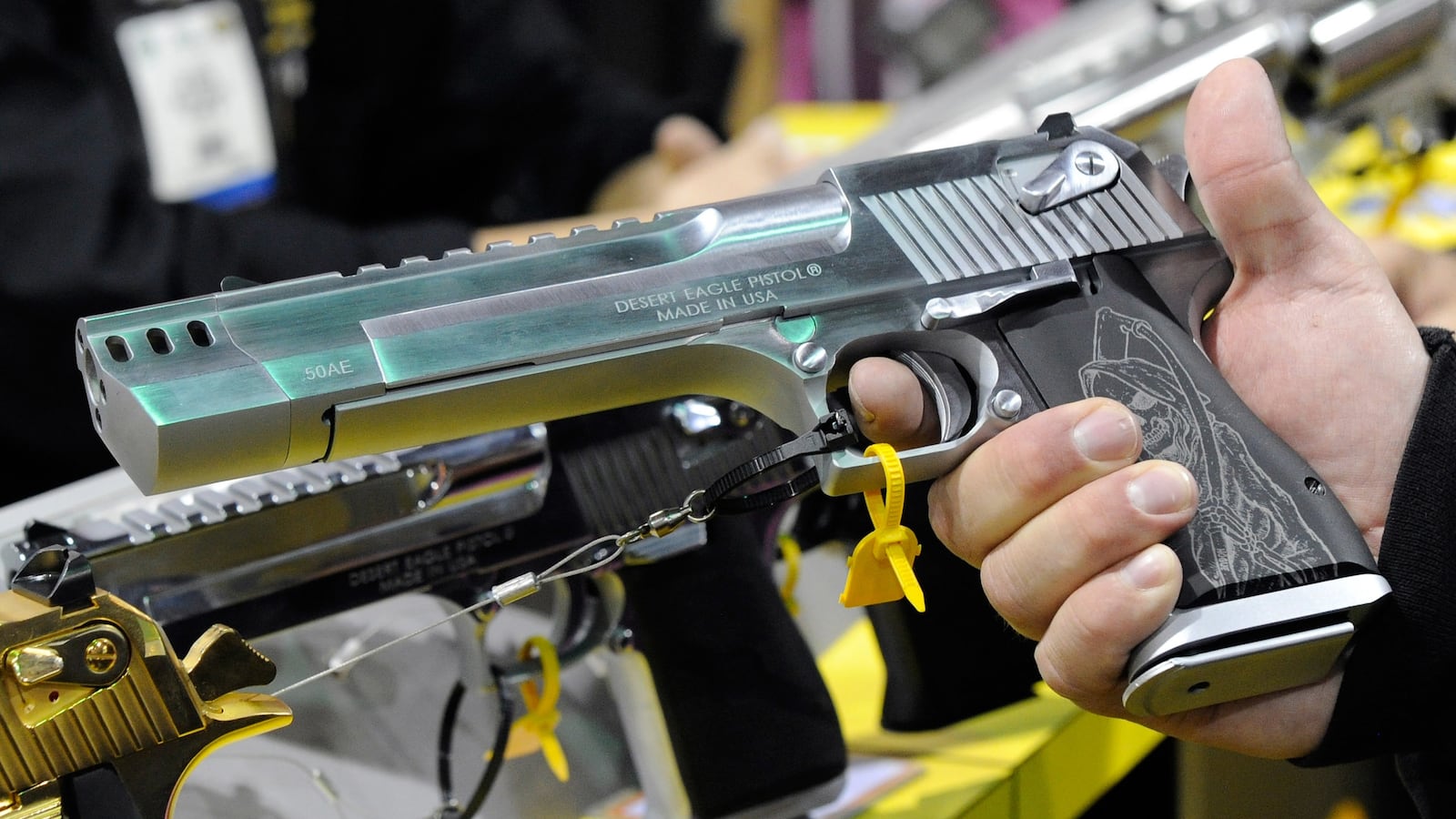
From its headquarters in the same Connecticut town where 20 schoolchildren and six educators were massacred, the gun industry’s leading trade association is marshaling opposition to the gun-control measures that state legislators are drafting to prevent future horrors.
Really.
The National Shooting Sports Foundation, which calls Newtown “our home,” has issued an “action alert,” calling on like-minded firearm owners to make their objections known at the Jan. 28 public hearing of the Connecticut state legislature’s Gun Violence Prevention Working Group.
“Connecticut Legislators Seeking to Destroy Second Amendment,” the action alert says. “Bills Will Make CT Citizens Instant Criminals.”
The NSSF warns that the proposed bills include a measure “restricting your ability to defend yourself and family by arbitrarily restricting the magazine size to 10 rounds.”
The NSSF exhorts the firearms faithful to “oppose knee-jerk reaction legislation.”
Those are the very words the NSSF used in 2011 when it mounted a successful effort to scuttle a previous bill that would have restricted magazines to 10 rounds. The bill, titled An Act Banning Large Capacity Ammunition Magazines, was introduced by state Sen. Gary LeBeau of East Hartford. This earlier “knee jerk” was in reaction to such mass shootings as the one in which a gunman with a 33-round magazine shot 19 people in Arizona, killing six and grievously wounding Rep. Gabrielle Giffords.
“A mentally ill young man leveled his handgun at my head and pulled the trigger,” Giffords notes on her Facebook page. “He then proceeded down the line of my constituents emptying his 33-round magazine until he ran out of ammunition and was tackled by bystanders.”
At a 2011 hearing on this bill just like the hearing scheduled for next week, the NSSF and its buddies testified for nearly 12 hours, passionately insisting upon their sacred right to fire more than 10 bullets without having to reload.
The bill went nowhere and 30-round magazines remained legal in Connecticut, even after a gunman in a Colorado movie theater demonstrated the deadly result of being able to fire 30 rounds in 29 seconds, as recorded in the background on a 911 call made as innocents screamed and died.
Thanks in part to the NSSF, the 30-round magazines Adam Lanza used to such horrific effect in Sandy Hook Elementary School were as legal as lollipops. Police afterward theorized that a half-dozen students who escaped after their teacher was shot might have been able to do so only because Lanza paused, either to reload or because his assault rifle jammed. That theory led to speculation that more children may have survived if Lanza had been required to pause more often.
In the aftermath, President Obama has proposed limiting magazines to 10 rounds, the maximum set by the federal assault-weapon ban before it expired. The number 10 seems to have been originally chosen as a figure low enough to significantly reduce firepower below, say, the 30-round clips issued to soldiers in combat, but still high enough to get through Congress.
New York already had a 10-round minimum, so Gov. Andrew Cuomo pushed through legislation reducing it to seven to signal he was taking action to control the violence. Seven brings the limit down to one more than the six-shooter of old, which gunslingers found to be enough to win the West.
In campaigning against limits on magazines, the NSSF is only doing what an industry trade association is supposed to do: serve the bottom line. The difference is that this particular industry produces products that can leave 20 youngsters killed with multiple bullet wounds in a school.
Not that the NSSF seems to feel—any more than does its sister outfit the NRA—that in so aggressively maintaining that the right to bear arms includes high-capacity magazines, it also bears some responsibility for the result. NSSF president and CEO Steve Sanetti made that clear in his state of the industry address at the organization’s annual SHOT (Shooting, Hunting Outdoor Trade) Show, held earlier this month in Las Vegas.
“Ladies and gentleman, the state of our industry tonight, in a word, is misunderstood,” Sanetti told the gathering. “Who among us has not been moved by that unspeakable tragedy that was inflicted by a deranged man upon the children of Newtown, Conn., our very home as the NSSF?”
He said the more passionate gun-control advocates “must recognize that we are not evildoers.”
“We are the good people of America as well as they are,” he went on. “We care deeply about the safety of our children just like they do.”
Sanetti cited the NSSF’s Project Child Safe, which includes the distribution of free gunlocks and safety brochures. And he suggested that beyond Lanza, the only party at all responsible was his mother, Nancy, who apparently failed to keep the weapons out of her son’s hands.
“Securely storing firearms when not in use would have prevented the Newtown tragedy with no additional laws needed,” he said.
Restricting high-capacity magazines and assault weapons is itself an assault on a way of life, Sanetti suggested.
“Our culture is a good culture. It’s one that should be celebrated, not destroyed,” he said.
Near the close, Sanetti asked the NSSF employees to stand up and be honored for having pressed on with the organization’s business in the aftermath of the massacre.
“We’ve been located in Newtown, Conn., for almost 20 years, and it’s our home that was violated by this senseless tragedy as well,” he said. “The lives of each of our employees that work in Newtown have been directly affected by December’s events, and yet they have carried on despite sorrows, tragedies, and pressures in superb fashion.”
Now they are all back at the big, white headquarters building in the town the NSSF calls home, a minute away from the church where many of the children’s funerals were held, and just few more minutes away from the scene of the massacre, where Lanza fired one 30-round clip after another.






